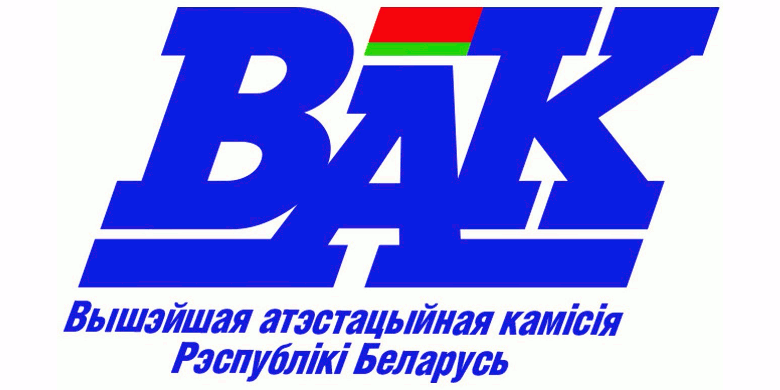Влияние аскорбиновой кислоты на эффективность доинкубации икры радужной форели в установке замкнутого водоснабжения
Ключевые слова:
радужная форель, икра, рост, выживаемость, аскорбиновая кислота, инкубацияАннотация
В статье представлены результаты исследования влияния аскорбиновой кислоты на среднюю длину, массу и выживаемость эмбрионов и личинок радужной форели (Oncorhynchus mykiss) при доинкубации в условиях рыбоводного индустриального комплекса (УЗВ). Установлено, что использование аскорбиновой кислоты в концентрации 200 мкмоль/л 15 минут ежедневно до перехода на экзогенное питание обеспечивает достоверное увеличение относительного прироста на 64%, увеличение средней длины на 9,2%, увеличение средней выживаемости рыбопосадочного материала радужной форели на 9,5% и улучшение токсикологических параметров при анализе декадной выживаемости рыбопосадочного материала радужной форели. Применение данного способа повышения эффективности инкубационного процесса актуально для рыбоводных хозяйств, занимающихся воспроизводством радужной форели.
Библиографические ссылки
2. Барулин, Н. В. Системный подход к технологии регулирования воспроизводства объектов аквакультуры в рыбоводных индустриальных комплексах / Н. В. Барулин // Весцi Нацыянальнай акадэмii навук Беларусі. Серыя аграрных навук. – 2015.– № 3. – С. 107-111.
3. Козлов В. И. Справочник фермера-рыбовода / В. И. Козлов – Москва : Издательство ВНИРО, 1998. – 342 с.
4. Evaluation of wax spray beads for delivery of low-molecularweight, water-soluble nutrients and antibiotics to Artemia / C. Langdon [et al.] // Aquaculture. – 2008. – Vol.284. – P. 151-158.
5. Multiple stressors in amphibian communities. Effects of chemical contamination in bullfrogs and fish / M.D. Boone, R.D Semlitsch., E.E. Little & M.C. Doyle // Ecological Applications. – 2007. – Vol.17. – P. 291-301.
6. Persistent organic pollutants in aquafeed and Pacific salmon smolts from fish hatcheries in British Columbia,Canada / B. Kelly [et al.] //Aquaculture.– 2008. – Vol.258. – P. 224-233.
7. Dabrowski, K. Ascorbic acid and reproduction in fish: endocrine regulation and gamete quality / K. Dabrowski, A. Ciereszko. // Aquaculture Research. – 2001. – Vol.32. – P. 623-638.
8. The effect of ascorbic acid supplementation in broodstock feed on reproduction of rainbow trout (Salmo gairdneri) / K. Y. Sandnes [et al.] // Aquaculture. – 1984. – Vol.43. – P. 167-177.
9. Heavy metal andwaste metabolite accumulation and their potential effect on rainbow trout performance in a replicated water reuse system operated at low or high flushingrates / J. Davidson [et al.] // Aquacultural Engineering. – 2009. – Vol.4. – P. 136–145.
10. Davidson, J. Heavy metal andwaste metabolite accumulation and their potential effect on rainbow trout performance in a replicated water reuse system operated at low or high flushingrates / J. Davidson [et al.] // Aquacultural Engineering. – 2009. – Vol.41. – P. 136–145.
11. Lee, K.J. Long-term effects and interactions of dietary vitamin C and E on growth and reproduction of yellow perch, Perca flavescens / K.J. Lee, K. Dabrowski // Aquaculture. – 2004. – Vol.230. – P. 377-389.
12. Mehrad, B. The effect of vitamin C on growth factors, survival, reproduction and sex ratio in guppy (Poecilia reticulata) / B. Mehrad, M. Sudagar // Aquaculture, Aquarium, Conservation & Legislation. – 2010. – Vol. 3(3). – P. 163- 170.
13. Effect of dietary ascorbic acid on tolerance to intermittent hypoxic stress in Japanese parrot fish / Y. Ishibashi [et al.] // Nippon Suisan Gakkaishi. – 1992. – Vol.58. – P. 2147-2152.
14. Evaluation of vitamin C enriched Artemia nauplii for larvae of the giant freshwater prawn / G. Merchie [et al.] // Aquaculture International. – 1995. – Vol.3. – P. 355-363.
15. Effects of ascorbic acid enrichment by immersion of rainbow trout (Oncorhynchus mykiss, Walbaum 1792) eggs and embryos / B. Falahatkar [et al.] // AquacultureResearch. – 2006. – Vol.37. – P.834-841.
16. Гук, Е.С Влияние аскорбиновой кислоты на выживаемость радужной форели (Oncorhynchusmykiss) в условиях in vitro / Е. С. Гук, Н. В. Барулин // Состояние и пути развития аквакультуры в Российской Федерции в свете импортозамещения и обеспечения продовольственной безопасности страны: материалы II Национальная научно-практическая конференция, Санкт-Петербург,13-15 сентября 2017 г.; под ред. А.А. Васльева – Саратов: ОАО «ЦеСАин». 2017 – 188 с.
17. Рекомендации по выращиванию рыбопосадочного материала радужной форели в рыбоводных индустриальных комплексах (с временными нормативами) / Н.В. Барулин [и др.].– Горки : БГСХА, 2016. – 179 с.
18. Шитиков В.К. Экотоксикология и статистическое моделирование эффекта с использованием R. / В.К. Шитиков – Тольятти: ИЭВБ РАН, 2016. – 149 с.
19. Barulin, N. Survival of embryos and larvae of the rainbow trout (Oncorhynchus mykiss, Walbaum, 1792) under influence of optical radiation at various temperature regimes / N. Barulin, M. Liman, V. Plavskii // Acta Biologica Universitatis Daugavpiliensis. – 2017. – Vol. 17 (1). – P. 19–28.
References
1. Gosudarstvennaya programma razvitiya ryibohozyaystvennoy deyatelnosti na 2016–2020 gody [The state program of development of fishing activities for 2016-2020]. Ministry of Agriculture of Republic of Belarus. Minsk, 2016, 102 p. (In Russian)
2. Barulin N. Sistemnyiy podhod k tehnologii regulirovaniya vosproizvodstva ob'ektov akvakulturyi v ryibovodnyih industrialnyih kompleksah. [System approach to the regulation of fish reproduction on fish farms]. Vesci Nacyjanal'naj akadjemii navuk Be-larusі. Seryja agrarnyh navuk [Proceedings of the National Academy of Sciences of Belarus. Agrarian series]. 2015, no 3, pp. 107-111. (In Russian)
3. Kozlov V.I. Spravochnik fermera-ryibovoda [Reference book by the farmer-fish breeder] Moscow, Publishing house VNIRO, 1998, 342 p. (In Russian)
4. Langdon C. et al. Evaluation of wax spray beads for delivery of low-molecularweight, water-soluble nutrients and antibiotics to Artemia. Aquaculture. 2008, Vol.284, pp. 151-158.
5. Multiple stressors in amphibian communities. Effects of chemical contamination in bullfrogs and fish. M.D. Boone, R.D Semlitsch., E.E. Little & M.C. Doyle/
Ecological Applications, 2007, Vol.17, pp. 291-301.
6. Kelly B. et al. Persistent organic pollutants in aquafeed and Pacific salmon smolts from fish hatcheries in British Columbia,Canada Aquaculture, 2008, Vol.258, pp. 224-233.
7. Dabrowski K.Ascorbic acid and reproduction in fish: endocrine regulation and gamete quality Aquaculture Research. 2001, Vol.32, pp. 623-638.
8. Sandnes K. Y. et al. The effect of ascorbic acid supplementation in broodstock feed on reproduction of rainbow trout (Salmogairdneri). Aquaculture. 1984, Vol.43, pp. 167-177.
9. Davidson J. et al. Heavy metal andwaste metabolite accumulation and their potential effect on rainbow trout performance in a replicated water reuse system operated at low or high flushingrates. Aquacultural Engineering. 2009, Vol.4, pp. 136–145.
10. Davidson J. Heavy metal andwaste metabolite accumulation and their potential effect on rainbow trout performance in a replicated water reuse system operated at low or high flushingrates. Aquacultural Engineering. 2009, Vol.41, pp. 136–145.
11. Lee K.J., Dabrowski K. Long-term effects and interactions of dietary vitamin C and E on growth and reproduction of yellow perch, Perca flavescens. Aquaculture. 2004, Vol.230, pp. 377-389.
12. Mehrad B., Sudagar M. The effect of vitamin C on growth factors, survival, reproduction and sex ratio in guppy (Poecilia reticulata). Aquaculture, Aquarium, Conservation & Legislation. 2010, Vol. 3(3), pp. 163-170.
13. Ishibashi Y. et al. Effect of dietary ascorbic acid on tolerance to intermittent hypoxic stress in Japanese parrot fish. Nippon Suisan Gakkaishi. 1992, Vol.58, pp. 2147-2152.
14. Merchie [et al.] G. Evaluation of vitamin C enriched Artemia nauplii for larvae of the giant freshwater prawn. Aquaculture International. 1995, Vol.3, pp. 355-363.
15. Falahatkar B. et al. Effects of ascorbic acid enrichment by immersion of rainbow trout (Oncorhynchus mykiss, Walbaum 1792) eggs and embryos. AquacultureResearch. 2006, Vol.37, pp.834-841.
16. Guk E., Barulin N. Vliyanie askorbinovoy kislotyi na vyizhivaemost raduzhnoy foreli (Oncorhynchus mykiss) v usloviyah in vitro [Effects of ascorbic acid on survival of rainbow trout (Oncorhynchus mykiss) fry during in vitro incubation]. Sostoyanie i puti razvitiya akvakulturyi v Rossiyskoy Federtsii v svete importozamescheniya i obespecheniya prodovolstvennoy bezopasnosti stranyi: materialyi II Natsionalnaya nauchno-prakticheskaya konferentsiya [State and paths of development of an aquaculture in the Russian Federtion in the light of import substitution and ensuring food security of the country] St. Рetersburg, Saratov: TseSAin, 2017, p. 188. (In Russian).
17. Rekomendatsii po vyiraschivaniyu ryiboposadochnogo materiala raduzhnoy foreli v ryibovodnyih industrialnyih kompleksah (s vremennyimi normativami) [Recommendations about breeding of a fish stock of an rainbow trout in fish-breeding industrial complexes (with temporary standards)]. N.Barulin [et al.] Gorki: BGSHA, 2016, 179 p. (In Russian)
18. Shitikov V. K. Ekotoksikologiya i statisticheskoe modelirovanie effekta s ispolzovaniem R. [Ecotoxicology and statistical modeling of the effect of using R].
Tol'yatti: IEVB RAN, 2016. 149 p. (In Russian)
19. Barulin N., Liman M., Plavskii V. Survival of embryos and larvae of the rainbow trout (Oncorhynchus mykiss, Walbaum, 1792) under influence of optical radiation at various temperature regimes. Acta Biologica Universitatis Daugavpiliensis. 2017, Vol. 17 (1), pp. 19–28.













